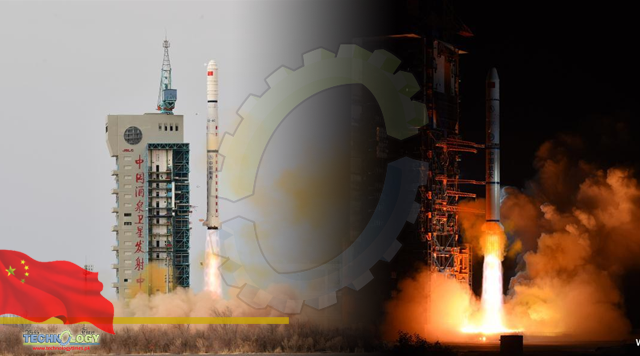The Yaogan name is used for Chinese military satellites. Yaogan satellites carry high-resolution optical, radar, and signals intelligence instruments, collecting information for analysis by Chinese military and intelligence agencies.

Weeks after the launch of an earlier trio of Chinese military satellites, another trio of spacecraft successfully took off Feb. 24 aboard a Long March 4C rocket on a clandestine mission that analysts believe may involve spying on foreign naval forces.
The Yaogan 31 triplet launched at 0222 GMT on Feb. 24 (9:22 p.m. EST on Feb. 23) from the Jiuquan space base on the Gobi Desert of northwestern China. Liftoff occurred at 10:22 a.m. Beijing time.
Chinese officials declared the launch a success, and U.S. military tracking data indicated the three-stage, liquid-fueled Long March 4C rocket delivered the Yaogan 31 satellites to an orbit 680 miles (1,100 kilometers) in altitude, with an inclination of 63.4 degrees to the equator.
China’s state-run Xinhua news agency reported the Yaogan 31 satellites “will be used for electromagnetic environment surveys and other related technology tests.”
The Yaogan name is used for Chinese military satellites. Yaogan satellites carry high-resolution optical, radar, and signals intelligence instruments, collecting information for analysis by Chinese military and intelligence agencies.
The satellite triplet launched Feb. 24 is the third trio of Yaogan 31-type satellites China has launched, following Long March 4C flights in April 2018 and on Jan. 29. Independent analysts believe the Yaogan 31 satellites have a maritime reconnaissance mission helping Chinese military authorities track foreign naval movements.
Before 2018, China launched five Long March 4C missions with Yaogan triplets into the same 680-mile-high orbit used by the Yaogan 31 series. Those flights may have deployed earlier generations of maritime surveillance satellites.
The launch of three more Yaogan 31 satellites Feb. 24 marked China’s fifth orbital launch attempt of 2021. Four of those missions were successful.
China plans more than 40 space launches this year, including a Long March 5B rocket flight to loft the core module of a Chinese space station, followed by cargo and crew missions to the nascent orbital complex.
Originally published at Spaceflight now